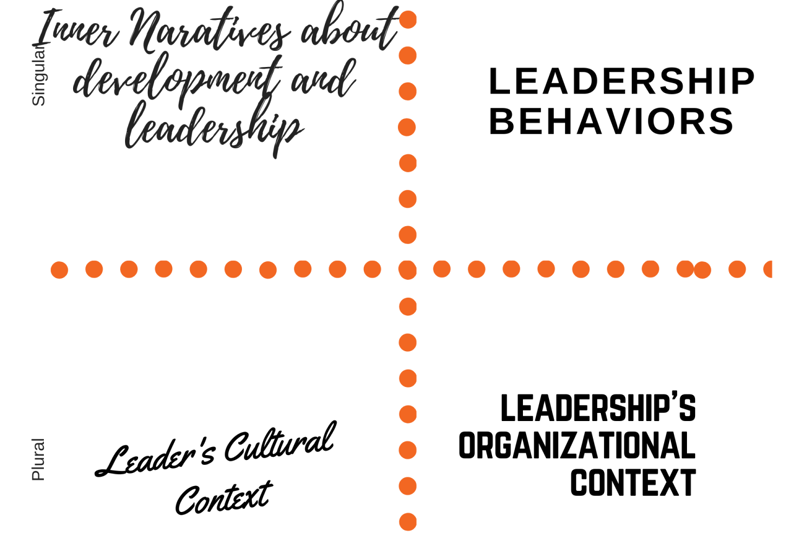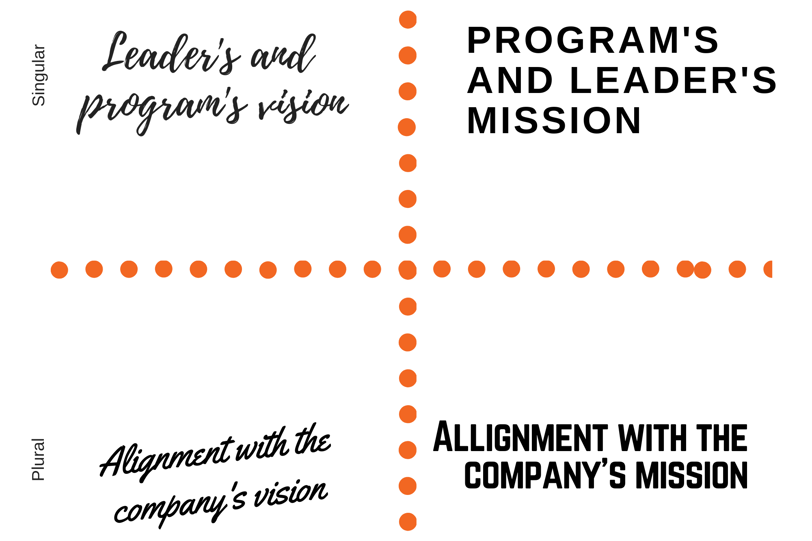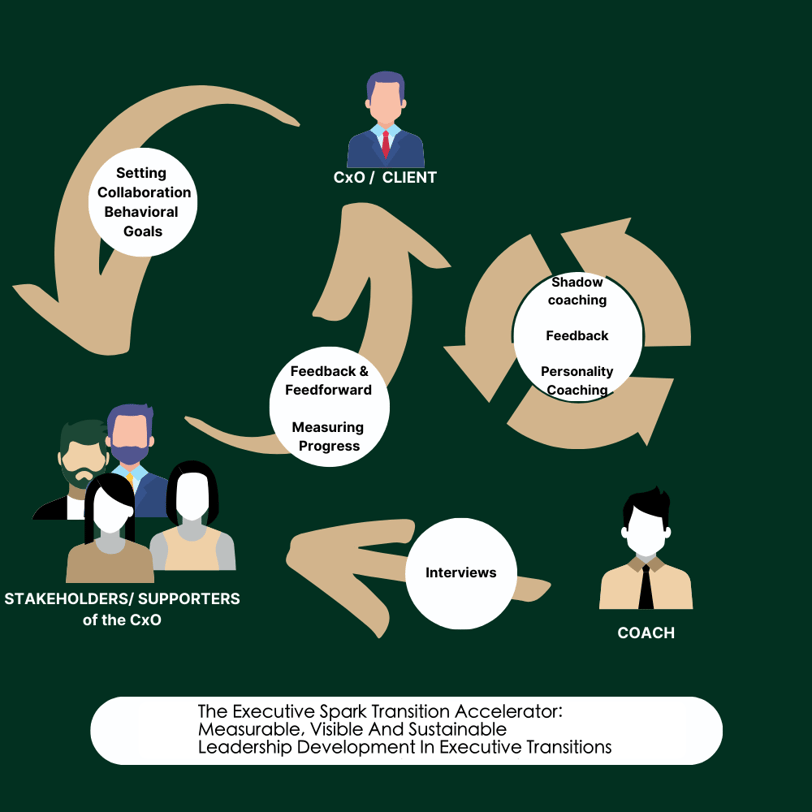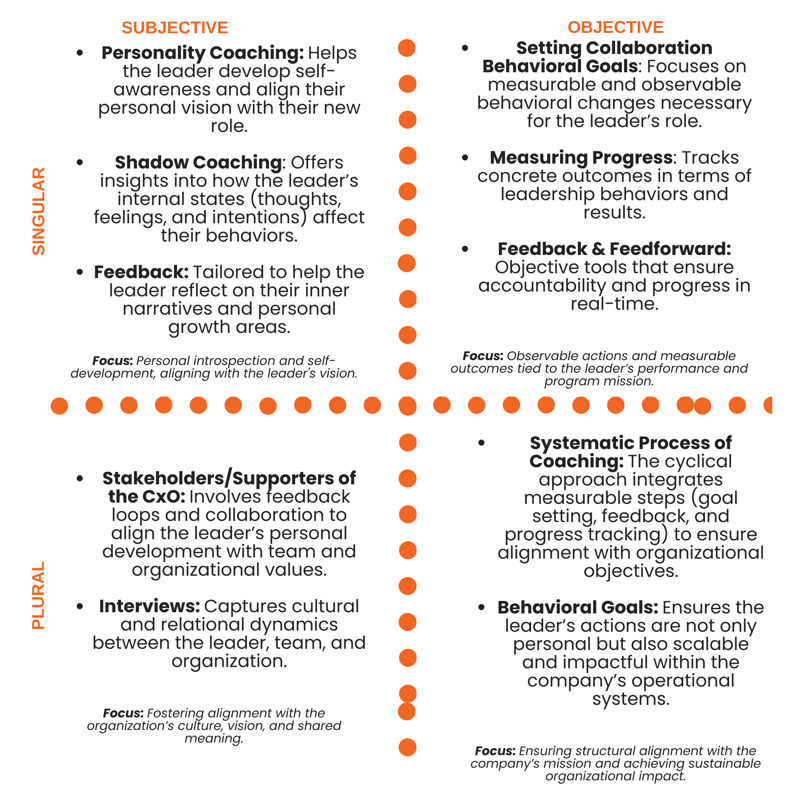Why do leadership development programs fail?
Leadership development programs often miss the mark by addressing isolated aspects of growth, leaving leaders unequipped to navigate today's complexities. This article dives into the concept of ‘integral failure’ and how conventional approaches overlook key dimensions like personal introspection, cultural integration, and systemic understanding. Discover how a holistic framework, like our flagship "Executive Spark Transition Accelerator", tackles these challenges, providing leaders with the tools for sustainable transformation and impactful leadership.
ACCELERATOR
George Bragadireanu
12/14/20217 min read
When you search the internet for ‘why leadership development programs fail’ you will end up with more than 40 million hits but none related to ‘integral failure’.
What is "integral failure"
Integral failure represents a comprehensive shortfall in leadership development programs, marking a profound disconnect between the multifaceted dimensions of leadership growth. Unlike conventional program failures that might focus solely on skill acquisition or behavioral adjustments, integral failure highlights the inability of these programs to address the leader's personal evolution, behavioral changes, cultural integration, and systemic understanding in a cohesive manner. This analysis seeks to uncover the root causes of such failures, advocating for a holistic approach that encompasses all dimensions of leadership development.
Integral Understanding
The integral development model, inspired by Ken Wilber's Integral Theory, offers a comprehensive framework for understanding human capacities and growth. It divides human development into four key quadrants:
Upper Left (UL): The interior individual aspects, including the leader's personality, inner narratives, and motivations. This quadrant emphasizes personal introspection, psychological development, and the subjective experience of the individual.
Upper Right (UR): The exterior individual aspects, which focus on observable actions, behaviors, deeds, and decisions. This quadrant represents the tangible, measurable outcomes of leadership development.
Lower Left (LL): The interior collective aspects, including the leader's cultural context, shared values, and collective meaning-making. This quadrant addresses the communal, interpersonal dynamics within organizations and societies.
Lower Right (LR): The exterior collective aspects, encompassing non-cultural contexts such as organizational structures, hierarchies, and systems. This quadrant focuses on the external, systemic arrangements that influence and are influenced by leadership.
By incorporating all four quadrants, an integral leadership development program ensures a balanced and comprehensive approach, addressing both the seen and unseen aspects of leadership growth.
The four quadrants - cathegories of failures
99% of the leadership development programs fail because they miss one or more quadrants of what integral development is.
An integral leadership development program is covering at the same time:
leader’s personality and inner narratives (Upper Left quadrant - see the image bellow), growth mindset, motivations (for and about learning, advancing, growing – things others can not see)
leader’s actions and behaviors (Upper Right q.), deeds and decisions (what others can see)
leader’s cultural context (Lower Left q.), shared values, collective meaning-making, company’s culture, family – things others can not see
leader’s non-cultural context (Lower Right q.), hierarchies, processes, systems – things everybody can see.
Let’s map the reasons given for failing (main reasons are marked accordingly):








1. CHALLENGES IN PERSONALIZING LEADERSHIP DEVELOPMENT: THE UL QUADRANT PERSPECTIVE
The Upper Left (UL) quadrant, focusing on the internal and individual aspects of leaders such as their motivations and mindsets, presents unique challenges in leadership development. A critical examination reveals several areas where programs frequently fall short:
Generic Approaches Over Customization: Many leadership development initiatives adopt a generalized, "one size fits all" methodology. This approach fails to recognize the diverse individual needs and preferences of leaders, offering solutions that lack the necessary customization to be truly effective. Such programs are often mistakenly seen as panaceas, overlooking the necessity for tailored developmental paths that consider the unique psychological makeup and learning styles of each leader.
Underestimating the Power of Mindsets: A significant oversight in many programs is the failure to address the foundational role of mindsets in driving behavioral change. By focusing too heavily on altering actions without understanding the underlying beliefs and attitudes that motivate these behaviors, programs miss the essence of sustainable change.
Insufficient Engagement with Leaders' Beliefs: Programs often do not challenge leaders' existing mindsets adequately, resulting in superficial engagement that fails to stimulate deep or lasting transformation. The initiatives may be too formal, with low stakes for real change, leading to ineffective outcomes.
Mismatch in Facilitator-Leader Perspectives: A divergence in the mindsets between facilitators and participants can hinder the learning process. When facilitators do not align with or understand the perspectives and experiences of the leaders they are teaching, the disconnect can lead to disengagement and reduced effectiveness of the program.
Lack of Leader Ownership and Investment: In many cases, the responsibility for the success of the development program is not fully embraced by the leaders themselves but is seen as an organizational mandate. This lack of personal ownership and investment diminishes the program's impact, as leaders may not fully commit to the process or apply themselves to the learning opportunities presented.
Disregard for Individual Learning Styles: Leadership development programs often prescribe a uniform approach to learning, ignoring the varied capacities and preferences for learning among leaders. This disregard for individual learning styles can prevent leaders from fully engaging with and benefiting from the program.
Conclusion and invitation
The analysis of leadership development programs' common shortcomings reveals the critical need for a holistic and integrated approach to leadership growth. As shown in the four quadrants—Leader’s and Program’s Vision (Upper Left), Program’s and Leader’s Mission (Upper Right), Alignment with the Company’s Vision (Lower Left), and Alignment with the Company’s Mission (Lower Right)—effective leadership transcends isolated improvements in skills or behaviors. It demands the alignment of personal introspection, cultural integration, systemic understanding, and organizational objectives.
Our flagship Accelerator Program addresses these challenges head-on by providing a comprehensive coaching framework that integrates all dimensions of leadership development. This program moves beyond conventional approaches, fostering sustainable transformation by aligning the leader's personal vision with their organization’s mission and cultural dynamics. By focusing on the inner narratives, observable actions, and systemic influences, the Accelerator Program ensures a balanced, multidimensional journey of growth.
To overcome these challenges, leadership development initiatives must prioritize customization, ensuring that programs are tailored to fit the unique motivations, mindsets, and learning styles of individual leaders. By fostering a deeper connection between learning content and practical application, addressing the foundational role of mindsets in behavior change, and ensuring alignment and engagement throughout the learning process, programs can achieve more meaningful and lasting outcomes.
2. FAILURES IN THE UR QUADRANT: LEADERSHIP BEHAVIORS
Failures in the Upper Right (UR) quadrant of leadership development programs often revolve around the tangible actions and behaviors of leaders. These shortcomings are primarily due to the program's inability to effectively challenge leaders to adopt and practice new behaviors and to ensure these behaviors are monitored and assessed over time. Essential to this quadrant's development is the concept that leaders must not only learn new strategies and skills but must also be supported in implementing these behaviors in their daily professional routines.
Lack of Behavioral Reinforcement: Many programs introduce new concepts and behaviors in theoretical contexts without providing sufficient opportunities for leaders to practice these behaviors in real-world scenarios. Without reinforcement, these behaviors are not internalized or sustained.
Inadequate Monitoring and Feedback: The absence of continuous monitoring and feedback mechanisms means that leaders are not held accountable for their behavior change. Effective development requires regular check-ins and constructive feedback to ensure new behaviors are being adopted and adjusted as needed.
Inconsistent Self-Assessment: Leaders often lack the tools or motivation to critically assess their behaviors consistently. Programs fail to cultivate a reflective practice within leaders, crucial for recognizing behavioral patterns and understanding the need for change.
Resistance to Behavior Change: Even when new behaviors are introduced, there's often resistance to change due to comfort with existing habits, lack of immediate results, or insufficient support from the organization to experiment with new behaviors.
To mitigate these failures, leadership development programs must incorporate robust mechanisms for practice, feedback, and accountability, ensuring that new behaviors are not only introduced but are also actively integrated into leaders' professional lives.
3. FAILURES IN THE LL QUADRANT: LEADERS' CULTURAL CONTEXT
The Lower Left (LL) quadrant focuses on the interior collective aspects, such as the cultural context within which leaders operate. Failures in this quadrant often stem from a program's inability to adequately address or integrate the nuances of organizational culture, shared values, and collective meaning-making.
Neglect of Cultural Dynamics: Many programs overlook the importance of cultural dynamics in leadership development, failing to address how shared beliefs and values influence leadership styles and effectiveness.
One-Size-Fits-All Approach: Programs often apply uniform strategies without considering the unique cultural context of each organization, missing the opportunity to tailor learning to fit the specific values and norms of the company.
Underestimation of Collective Meaning-Making: There's a lack of emphasis on how leaders can influence and are influenced by the collective meaning-making within their organizations. Effective leadership involves navigating and shaping these shared understandings, but many programs do not provide the tools or insights to manage this aspect.
Lack of Engagement with Company Culture: Programs frequently fail to engage with or leverage the existing company culture in the development process, missing a critical component of leadership effectiveness that stems from understanding and integrating into the cultural fabric of the organization.
Addressing these failures requires leadership development programs to deeply engage with and understand the cultural dimensions of leadership, providing strategies that are adaptable to the unique cultural contexts of different organizations.
4. FAILURES IN THE LR QUADRANT: ORGANIZATIONAL CONTEXT
Failures in the Lower Right (LR) quadrant relate to the exterior collective aspects of leadership, including organizational structures, systems, and processes. These failures often occur because leadership development programs do not sufficiently account for or address the systemic and structural aspects of organizations that leaders must navigate.
Overlooking Systemic Influences: Programs may ignore the systemic influences on leadership behavior, including organizational hierarchies, policies, and procedures, which can significantly impact leadership effectiveness.
Failure to Integrate Systemic Thinking: Leaders are often not encouraged to develop systemic thinking skills that would allow them to understand and influence the organizational systems within which they operate.
Lack of Alignment with Organizational Processes: Development initiatives frequently fail to align with existing organizational processes and systems, making it difficult for leaders to apply new learnings within the constraints of their organizational environment.
Ignoring the Impact of Hierarchies and Power Dynamics: Many programs neglect to address how hierarchies and power dynamics within organizations affect leadership behavior and opportunities for change.
To overcome these failures, leadership development programs need to incorporate a systemic perspective, offering leaders the tools to understand and effectively navigate the complex systems and structures of their organizations. This includes aligning program objectives with organizational processes and addressing the influence of power dynamics and hierarchies on leadership practices.
Through this integrative approach, leaders gain a profound understanding of their roles, enhance their effectiveness, and foster alignment with organizational goals. The Accelerator Program empowers leaders to achieve clarity in their personal and professional missions while fostering a culture of collaboration, innovation, and purpose.
Call to Action:
Are you ready to overcome the limitations of traditional leadership programs and embrace a holistic journey of transformation? The Accelerator Program offers the insights, tools, and support necessary to unlock your leadership potential. Discover how this program can align your vision, mission, and impact—both personally and organizationally—by exploring it today!
Embrace Responsible Leadership and Achieve Real Results
Ready to lead with responsibility and achieve real results? Schedule your discovery call today and embark on the path to effective leadership.
The Leadership Spark
Social
